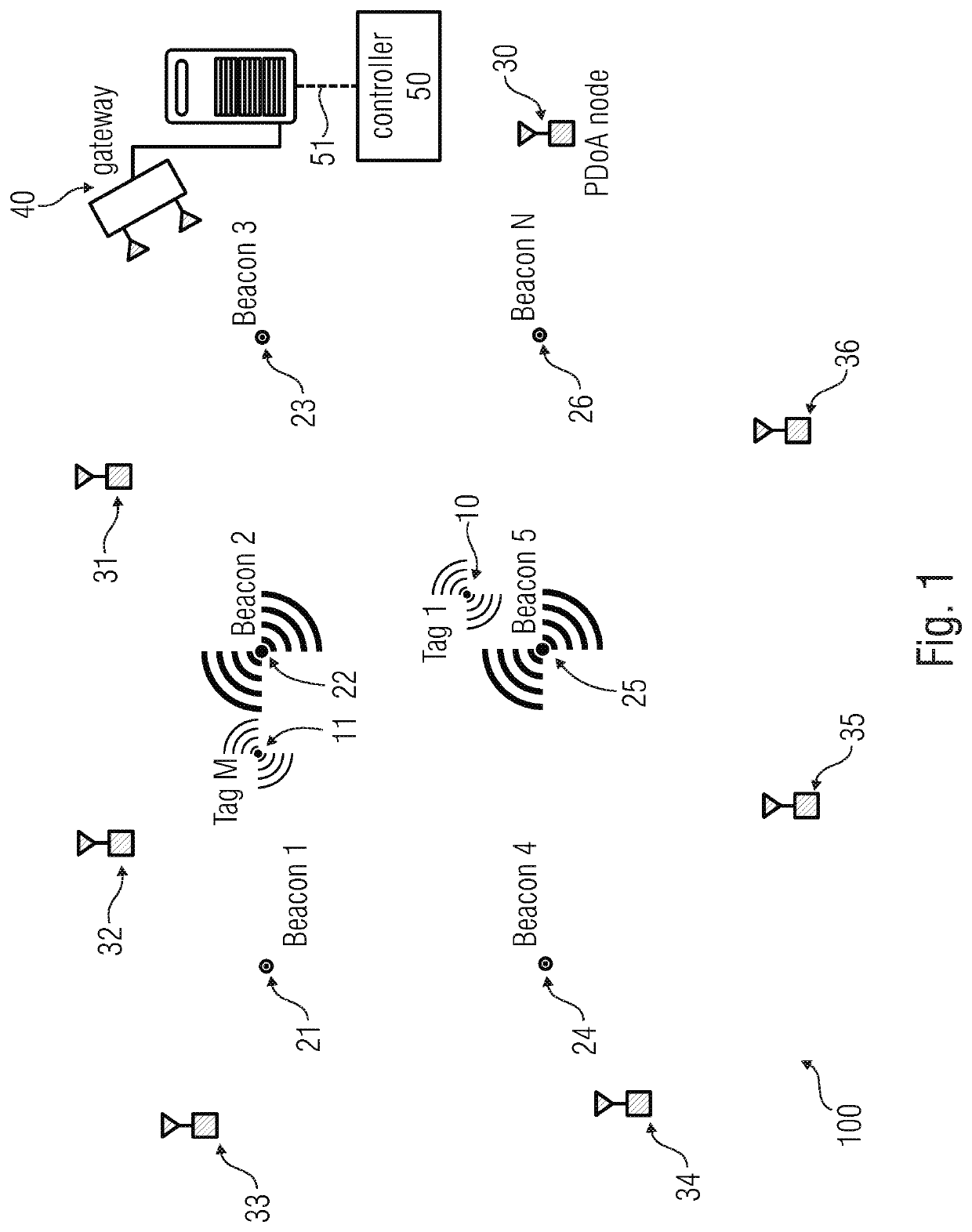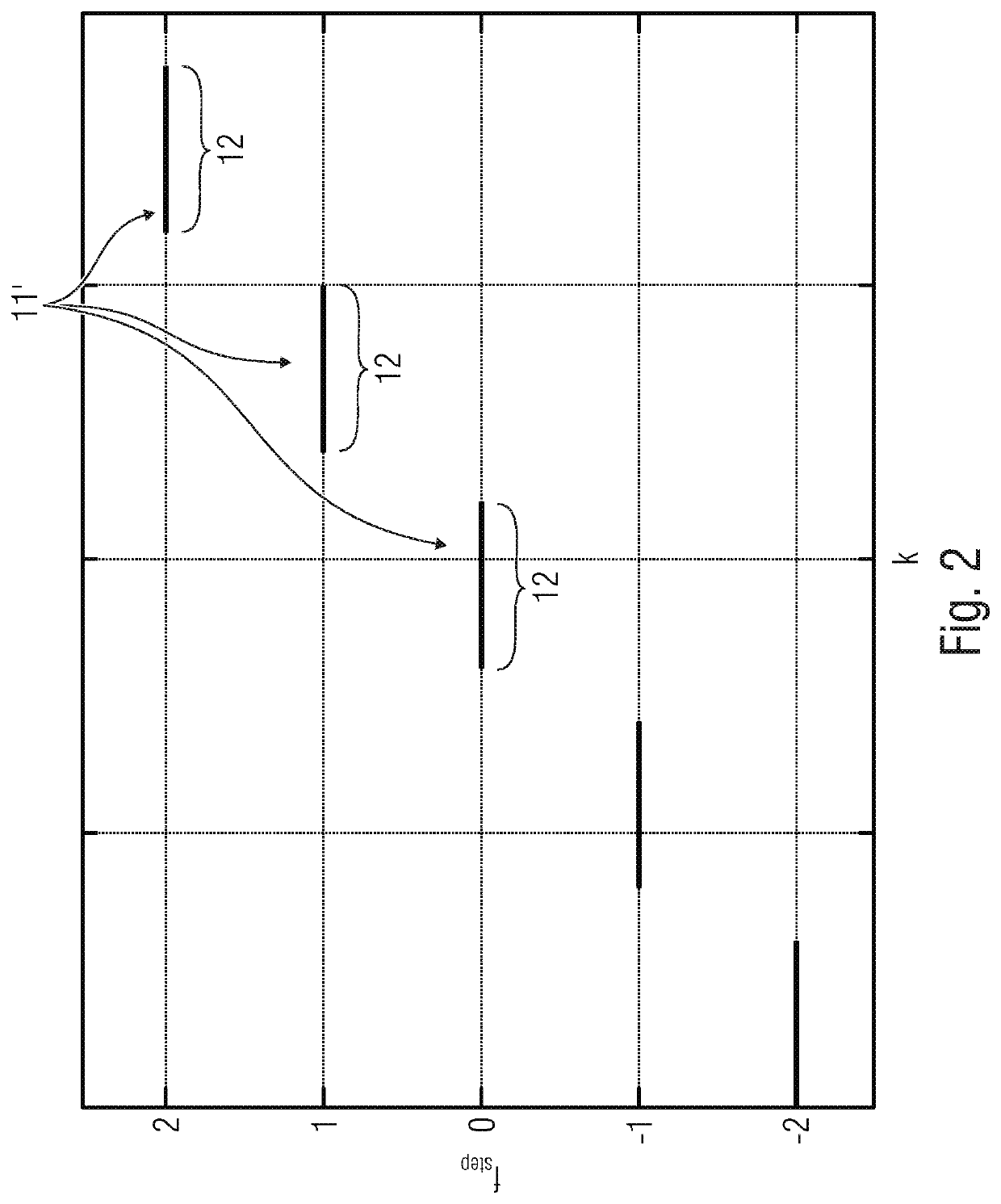Waveform design for locating system
a waveform and positioning system technology, applied in the field of waveforms, can solve problems such as multipath, high signal bandwidth, and inability to easily achieve, and achieve the effects of minimizing interference and similar impairment, and reducing interference between different tag devices and/or known position devices
- Summary
- Abstract
- Description
- Claims
- Application Information
AI Technical Summary
Benefits of technology
Problems solved by technology
Method used
Image
Examples
Embodiment Construction
[0111]Hereinafter, embodiments and parts of the invention are discussed.
5.1. The Network of FIG. 1
[0112]FIG. 1 shows a system 100 for the localization of at least one tag device (here, “Tag 1”, referred to with 10, and “Tag M”, referred to with 11). The system 100 can comprise the tag devices 10 and 11, whose position is to be determined. The system 100 can also comprise known position devices (here “Beacon 1-N”, being referred to with 21-26), whose position is known. The system 100 can also comprise a localization device configured to localize the tag devices 10 and 11. The localization device (which is in this case a distributed device with several distinct units displaced in different places) can comprise a plurality of (e.g., at least three) receivers 30-36 (which can be PDoA receivers) which permit to calculate the position of the tag devices 10 and 11 by analysing the phase information of signals transmitted by devices 10 and 11 and known position devices 21-26.
[0113]According...
PUM
 Login to View More
Login to View More Abstract
Description
Claims
Application Information
 Login to View More
Login to View More - R&D
- Intellectual Property
- Life Sciences
- Materials
- Tech Scout
- Unparalleled Data Quality
- Higher Quality Content
- 60% Fewer Hallucinations
Browse by: Latest US Patents, China's latest patents, Technical Efficacy Thesaurus, Application Domain, Technology Topic, Popular Technical Reports.
© 2025 PatSnap. All rights reserved.Legal|Privacy policy|Modern Slavery Act Transparency Statement|Sitemap|About US| Contact US: help@patsnap.com



